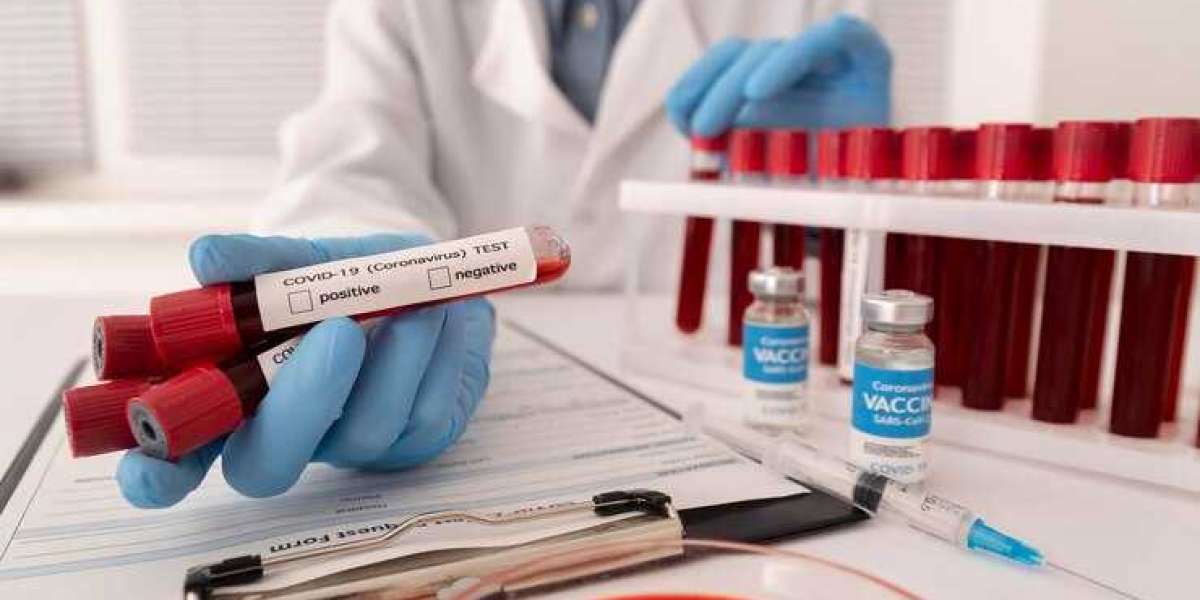The quest for an effective synthetic blood substitute has captured the attention of the medical community for decades. With the ongoing challenges of blood supply shortages, risks of transfusion-related infections, and the demand for blood during emergency situations, the development of synthetic alternatives to natural blood is becoming increasingly important. While the science of synthetic blood substitutes is still evolving, advancements in biotechnology, coupled with increasing demand for safe and sustainable alternatives, are driving the growth of this market.
The global synthetic blood substitute market, valued at $8.7 million in 2024, is anticipated to grow at a CAGR of 15.43%, reaching $36.7 million by 2034.
What Are Synthetic Blood Substitutes?
Synthetic blood substitutes, also known as artificial blood, are laboratory-created substances designed to mimic some or all of the functions of human blood, particularly in carrying oxygen throughout the body. Unlike donated blood, which requires matching blood types and carries risks of disease transmission, synthetic blood substitutes are designed to be universally compatible, sterile, and safe for use across various medical applications.
These substitutes are typically used to temporarily replace blood or specific components of it, such as hemoglobin, and are especially valuable in cases of trauma, surgery, or for patients who cannot receive blood transfusions for religious or medical reasons. Currently, synthetic blood substitutes fall into two primary categories:
- Hemoglobin-Based Oxygen Carriers (HBOCs): These products are designed to carry oxygen in the bloodstream using modified hemoglobin molecules, either from human, animal sources, or synthetic hemoglobin.
- Perfluorocarbon-Based Oxygen Carriers (PFCs): These synthetic molecules are highly efficient at dissolving and transporting oxygen. They are chemically stable and can circulate oxygen throughout the body.
Key Drivers of the Synthetic Blood Substitute Market
Several factors are driving the development and commercialization of synthetic blood substitutes:
1. Global Blood Supply Shortages
The ongoing challenges with maintaining a sufficient and safe blood supply are a significant factor driving the market for synthetic blood substitutes. Blood donations often fall short of the demand, particularly in developing regions and during natural disasters or pandemics. The growing need for blood products in surgical procedures, trauma care, and treatment of chronic conditions has exacerbated this shortage.
Synthetic blood substitutes can serve as an alternative in emergency situations or when compatible blood is unavailable. They offer the promise of reducing the dependency on donor blood, ensuring a more stable and predictable supply.
2. Minimizing Transfusion-Related Risks
Although blood transfusions are generally safe, they carry certain risks, including the transmission of infectious diseases, immune reactions, and incompatibility issues. Even with extensive screening protocols, there remains a small risk of contamination or transfusion-related complications.
Synthetic blood substitutes, being produced under controlled conditions, aim to eliminate these risks by offering a sterile, pathogen-free alternative that can be universally administered to patients, regardless of blood type. This also reduces the time needed to find compatible donors.
Request A Free Detailed Sample on Synthetic Blood Substitute Market
3. Advancements in Biotechnology and Nanotechnology
The synthetic blood substitute market has benefited from advances in biotechnology and nanotechnology. Researchers have developed innovative approaches to modify hemoglobin molecules, stabilize oxygen-carrying proteins, and improve the efficiency of synthetic carriers. Nanotechnology, in particular, has allowed for the development of nanoscale carriers capable of mimicking the oxygen transport functions of red blood cells.
These advancements have improved the performance and safety profiles of synthetic blood substitutes, making them a more viable option for clinical use.
4. Rising Need in Military and Trauma Care
In battlefield settings or remote locations, the need for a portable and long-lasting blood substitute is paramount. Military forces and emergency responders have a critical need for synthetic blood products that can be easily stored, transported, and administered in life-threatening situations where traditional blood transfusions are not feasible.
The ability to stockpile synthetic blood substitutes without the need for refrigeration makes them particularly useful in emergency preparedness and trauma care scenarios.
Key Challenges
Despite the promising outlook, the synthetic blood substitute market faces several significant challenges:
1. Regulatory Hurdles
The development of synthetic blood products is subject to stringent regulatory scrutiny. The approval process for these products is complex and lengthy, requiring extensive clinical trials to demonstrate safety, efficacy, and stability. The U.S. Food and Drug Administration (FDA) and the European Medicines Agency (EMA), among others, have established rigorous guidelines that companies must meet before synthetic blood products can be commercialized.
While several synthetic blood substitutes have reached clinical trial stages, very few have been approved for widespread use due to safety concerns, such as toxicity and adverse side effects.
2. High Development Costs
Research and development of synthetic blood substitutes involve significant costs, particularly due to the need for advanced technologies and long clinical trials. Many products have been shelved after years of development due to unforeseen challenges or failures in clinical trials.
The high costs associated with developing synthetic blood substitutes have slowed market growth, limiting the number of companies capable of sustaining the necessary investment.
3. Technical Challenges
Despite advancements, creating a synthetic product that fully replicates the complex functions of human blood remains a daunting challenge. Hemoglobin-based oxygen carriers (HBOCs), for example, have been linked to side effects such as hypertension and oxidative stress. Similarly, perfluorocarbon-based carriers can face issues with oxygen delivery efficiency and clearance from the body.
Solving these technical issues will be critical for the long-term success of synthetic blood products.
Emerging Trends
Several key trends are shaping the future of the synthetic blood substitute market:
1. Focus on Specific Medical Applications
Rather than seeking to completely replace natural blood, many companies are focusing on creating synthetic products for specific medical applications, such as temporary oxygen delivery during surgery, trauma care, or for patients with rare blood types. By focusing on these niche applications, synthetic blood products can meet immediate medical needs while avoiding the complex challenges associated with creating a full blood replacement.
2. Nanotechnology-Enhanced Blood Substitutes
Nanotechnology has introduced new avenues for enhancing the capabilities of synthetic blood products. By developing nanoscale hemoglobin carriers or PFCs, scientists aim to improve the efficiency of oxygen transport, reduce side effects, and increase the lifespan of synthetic blood products in the bloodstream. These nanoscale carriers are also being designed to mimic the structure and function of red blood cells more closely.
3. Collaborations and Partnerships
Collaborations between biotechnology firms, research institutions, and healthcare organizations are essential to advancing the development of synthetic blood substitutes. Many companies are forming partnerships to pool resources, share knowledge, and accelerate the progress of clinical trials. These collaborations are crucial in overcoming the financial and technical barriers associated with synthetic blood development.
Regional Market Insights
The synthetic blood substitute market is still emerging, but it has garnered interest in various regions across the globe. Key regions include:
1. North America
North America, particularly the United States, is one of the leading markets for synthetic blood substitutes. The region benefits from a robust biotechnology sector, significant government funding for medical research, and a high prevalence of advanced trauma care and surgical procedures. Several U.S.-based companies are at the forefront of developing and testing synthetic blood substitutes.
2. Europe
Europe is another key player in the synthetic blood substitute market, with countries like the UK, Germany, and France conducting advanced research in biotechnology and nanotechnology. European regulatory bodies are also actively engaged in evaluating and supporting synthetic blood trials, particularly in the context of emergency care and trauma treatment.
3. Asia-Pacific
The Asia-Pacific region, led by countries like Japan and China, is expected to see significant growth in the synthetic blood substitute market in the coming years. Rising healthcare investments, increasing demand for advanced trauma care solutions, and a growing focus on medical innovation are driving interest in synthetic blood substitutes in the region.
Future Prospects and Conclusion
The synthetic blood substitute market holds immense potential to transform the future of trauma care, emergency medicine, and surgery by offering a safe and readily available alternative to human blood. While significant challenges remain, particularly in terms of regulatory approval and technical hurdles, ongoing advancements in biotechnology, nanotechnology, and clinical research are paving the way for new breakthroughs.
As research progresses and more synthetic blood substitutes enter clinical trials, the market is poised for growth, particularly in niche medical applications where donor blood is scarce or unavailable. The future of synthetic blood substitutes looks promising, offering the potential to save lives and alleviate the burden on global blood supply systems.
BIS Research, recognized as a best market research company, provides premium market intelligence on deep technologies poised to cause significant market disruption in the coming years. At BIS Research, we focus exclusively on technologies related to precision medicine, medical devices, and life sciences . Our comprehensive analysis of the healthcare industry examines trends, challenges, and opportunities across key sectors, including pharmaceuticals, biotechnology, medical devices, and healthcare services.














